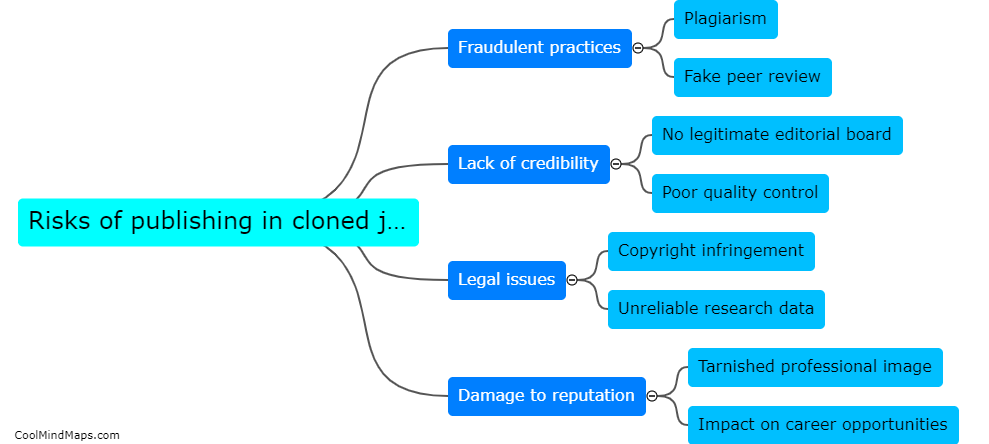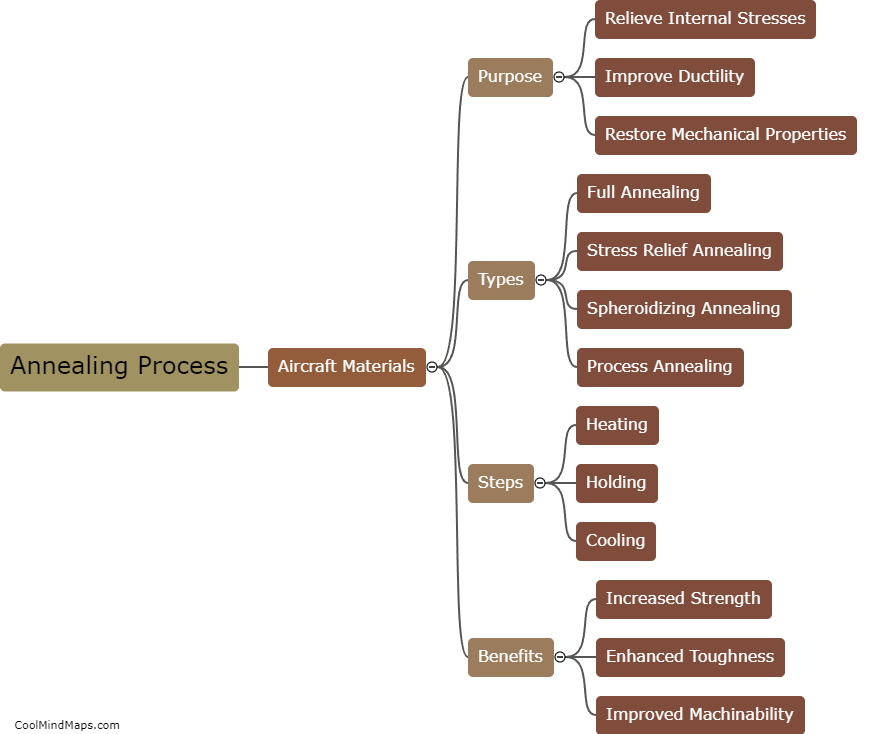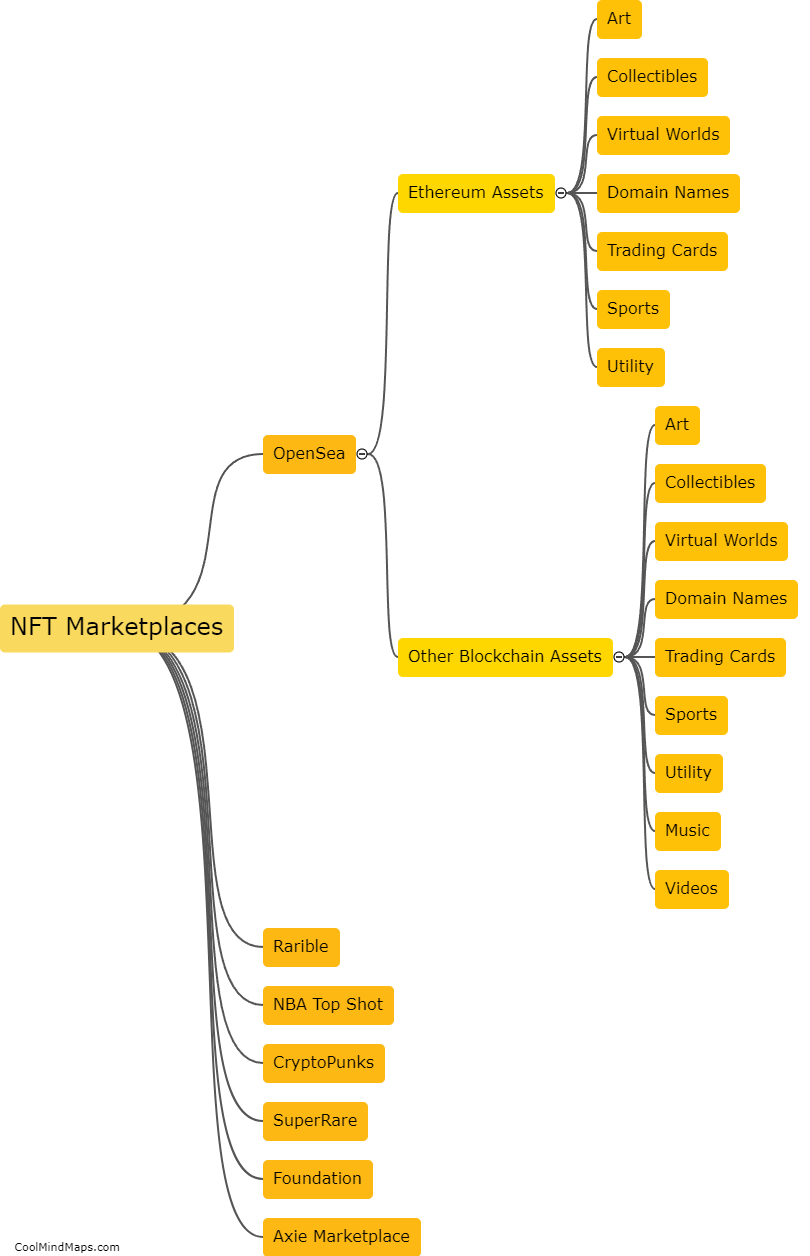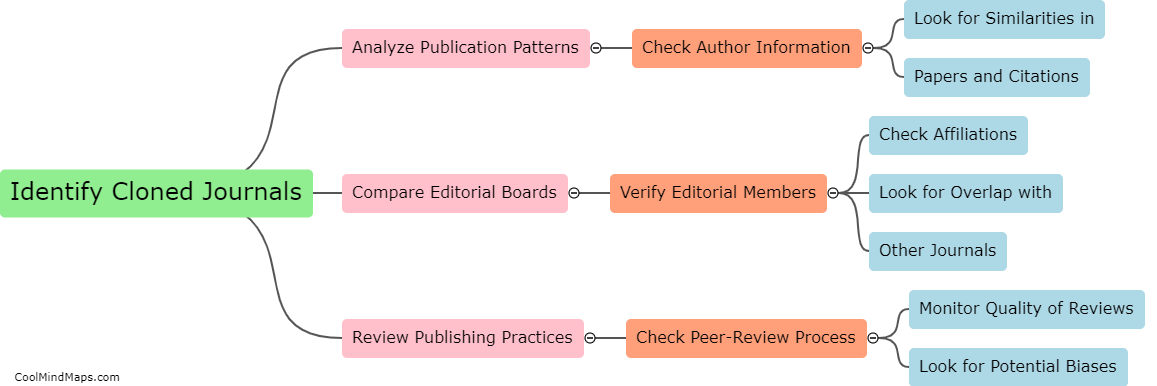What are the risks of publishing in cloned journals?
There are several risks associated with publishing in cloned journals, which are predatory publishers that imitate legitimate academic journals in order to deceive researchers and profit from their work. One of the main risks is potential damage to a researcher's reputation, as publishing in an illegitimate or low-quality journal can be seen as a lack of credibility in the academic community. Additionally, cloned journals often lack rigorous peer review processes, leading to the publication of poor quality or inaccurate research. Researchers may also face issues with copyright infringement or unethical practices, as these journals may not adhere to standard publishing guidelines. It is important for researchers to thoroughly vet journals before submitting their work to avoid these risks.

This mind map was published on 2 June 2024 and has been viewed 67 times.











